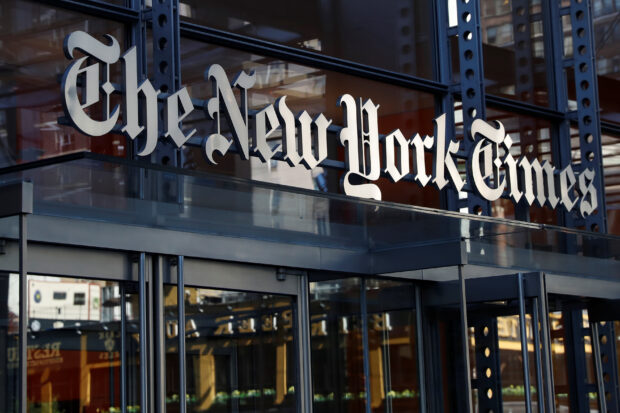
The New York Times building is seen in Manhattan, New York, U.S., August 3, 2020. REUTERS/Shannon Stapleton/File photo
New York Times Co signaled on Tuesday that advertising spending was picking up faster than market expectations after the news publisher beat Wall Street estimates for second–quarter results, sending its shares higher by more than 6 percent.
The company has been bundling access to news reports and articles with a diverse portfolio of products from podcasts and games to product recommendations as it looks to boost engagement and retain users.
Demand for advertisement spots is on a rebound after economic uncertainty forced companies to trim ad spending. Hospitality, travel and retail are among the sectors boosting ad spend.
The New York Times expects total advertising revenue to be flat in the third quarter, while analysts estimate a drop of 4.1 percent, according to Refinitiv data.
A rebound in marketing spending helped NYT’s digital advertising revenue grow 6.5 percent in the April-June period.
The company rolled out advertising products across its bundle, including its games and sports news offering The Athletic, boosting digital ad revenue, CEO Meredith Levien said on a post-earnings call with analysts.
“The bear case … was likely centered around potential digital advertising revenue softness and that is not playing out,” Cannonball Research analyst Vasily Karasyov said.
Analysts and industry experts expect demand for advertising to increase in the second half of the year, as inflation cools.
NYT posted revenue of $590.9 million for the second quarter, compared with estimates of $580.5 million.
The company reported average revenue per user (ARPU) for bundled subscriptions of $13.40, compared with a total digital-only ARPU of $9.15.
NYT added 180,000 digital-only subscribers in the second quarter, compared with 190,000 in the first quarter. It has a goal of 15 million subscribers by 2027.
On an adjusted basis, the company earned 38 cents per share, compared with estimates of 21 cents.